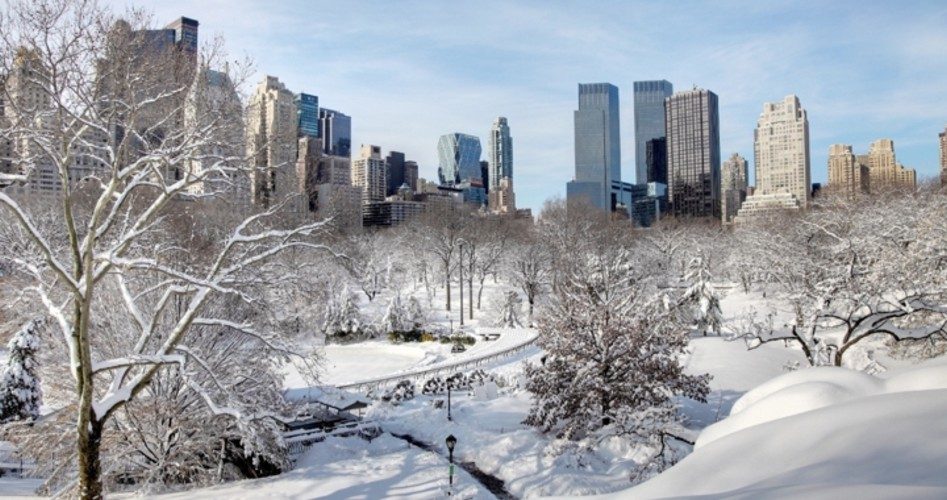
Those plucky New Yorkers, so used to overcoming challenges of all kinds, have had a lot of wintry precipitation to deal with lately. The March 22 snowfall of more than eight inches in Manhattan (and nearly 14 inches in Staten Island) means that, for the fifth straight year, over 30 inches of snow has fallen on the City that Never Sleeps. The weather conditions bring up the question as to whether these snow totals are to be a new normal for the area. Is global warming (aka climate change) finally manifesting in the form of fiercer winters?
New York hasn’t seen snowfall totals like this in consecutive winters since the 1880s . And it’s not just New York. The entire northeast has seen a series of winters that have been colder and snowier than normal. Four nor’easters have hit the area this March alone. So, what exactly is going on?
One theory is that the Arctic is warming more quickly than the rest of the globe. This somehow weakens the jet stream, which usually keeps the cold air where it belongs — in the north. When the jet stream weakens, polar air can push south, deep into North America. So far, although a correlation can be made between a warmer Arctic and a colder northeast United States, a direct link cannot be made between the two events.
A study published on March 13 in Nature Communications, makes the observational connection but, again, gives no clear reason as to why there is a link. From the study: “Because this is an observational study, cause and effect can not be determined….”
“Five of the past six winters have brought persistent cold to the eastern United States and warm, dry conditions to the west, while the Arctic has been off the charts warm,” said co-author of the study, Dr. Jennifer Francis. “Our study suggests that this is no coincidence. Exactly how much the Arctic contributed to the severity or persistence of the pattern is still hard to pin down, but it’s becoming very difficult to believe they are unrelated.”
Late in February, many news outlets breathlessly reported that the Arctic is now warmer than it has ever been in recorded history. And that may indeed be true. However, “recorded history” is the key term here. Arctic temperatures have only been reliably recorded since just after World War II. In terms of long term climate — as opposed to weather — 70 years is a pretty small sample size.
And other data is incomplete as well. A lack of sea ice, for example, has been cited as a possible cause of the severe winters in the northeast. Were Arctic ice conditions of today similar to the ones in 1880s, the last time such prolonged snowfall accounts were ever recorded? We don’t really know. Although there were a couple of ill-fated expeditions in that period (the Polaris and the Jeanette expeditions), neither voyage measured sea ice scientifically. Again, accurate measurements go back only about 70 years.
It is a worthy scientific endeavor to study things such as Arctic temperature and sea ice accumulations, since it will eventually help us to understand Earth better. But scientists may be erring when they simply suppose a connection between relative warmth in the Arctic and severe winters in one (geographically speaking) small part of our world. It’s the medical equivalent of diagnosing a brain cancer by observing acne on one’s skin. You have to go deeper to find the real answers.
What role does the Sun play in the warming Arctic? Are the ocean currents stable? If not; why not? What role does geothermal energy play? Are there unknown volcanoes now active, perhaps under the sea? We need answers on everything before we act, to even know if we should act in any way. And we definitely need full answers prior to adopting socialistic governmental “solutions” to these issues.
But none of that helps people in New York who are tired of shoveling snow. And, as a fellow resident of a northern area, all I can say is, I feel their pain. But it is not really helpful (and not really scientific) to just say anthropogenic global warming is the culprit. Punxsutawney Phil has predicted a long winter on four out of the last five Groundhog Days. Since the groundhog seems to have a good handle on this, maybe he’s the one to blame.
DenisTangneyJr/E+/Getty Images




